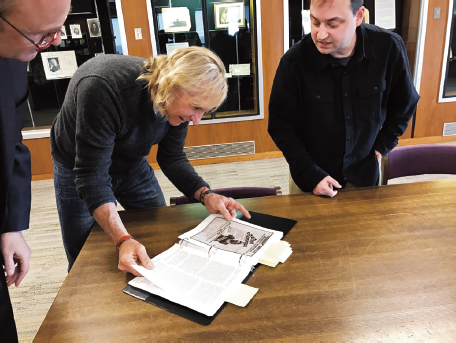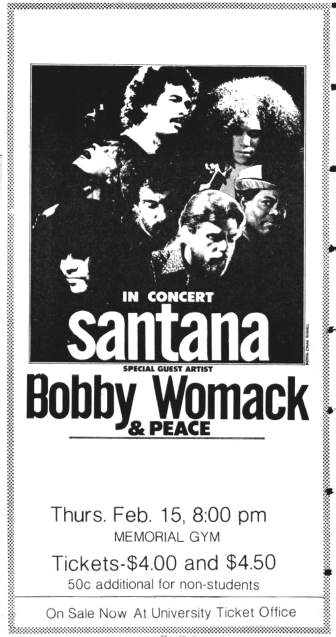Introduction
Kent, Ohio—is this place extraordinary? Have great things happened here? Have horrible things happened here? Is this just another one of the thousands of towns that dot the midwestern United States? As a Kent native, I have pondered these questions my entire life.
On May 4, 1980, when I was five years old, my father took me behind his Kent State University office to the ten-year commemoration of the KSU shootings. There I saw huge crowds with news helicopters flying overhead. That night, while watching the evening news with my parents, I saw images from the footage those helicopters had taken. It was then I realized that maybe this place was somehow different from other places.
Since then, I have become more and more aware of the shootings that happened at Kent State through the endless amount of books, documentaries, studies, and stories that I have never stopped encountering since that day back in 1970. Through my life when I hear people talk about the history of this town, it’s usually dominated by that topic of conversation. Every once in a while, though, I would hear these other vague stories about Kent that weren’t related to the shootings: tales of Bruce Springsteen showing up in town once and how DEVO was from Kent, among others.
As a teenager, I had a job at a local record store, and from time to time I would hear these stories from some of the customers: “Oh yeah, we used to see Joe Walsh play around the corner every Sunday night,” or, “I saw Pink Floyd play The Dark Side of the Moon in its entirety up on campus, like twenty years ago.” These anecdotes always grabbed my interest, but the details were scant.
In December 1997, when I took a trip to New York City, I walked into a Greenwich Village poster gallery called the Psychedelic Solution. This unique shop dealt in the rarest of rare posters that mostly focused on the late ’60s and ’70s. When I started inquiring about the kinds of items it sold, the guy behind the counter told me about how every single show poster, handbill, or ad I saw in an old newspaper for some big show had some kind of worth, whether for monetary, design, or historic value. He told me his favorite band of all time was the James Gang, and he was more than aware that its origins were in Kent, Ohio. He even knew some details about the band’s time in Kent that I did not.
When I came back from that trip, I decided to follow that guy’s lead. I wanted to see if any old Daily Kent Stater issues had ads for Pink Floyd’s The Dark Side of the Moon campus performance. When I went looking at the dirty old microfilm from the spring of 1973, I didn’t find any information on that show, but I did find ads for a Santana performance in the old Memorial Gym. What struck me, though, is that this show happened when the artist was vital. Santana wasn’t a legacy act—it was an established band. After this initial search I put my curiosities aside for a while, but twelve years later, I started digging again.
In 2010, I received the opportunity to do a gallery show in the Kent State University Library, and I thought, wouldn’t it be great to go back and find those original ads for those performances and blow them up into custom posters? As 2010 was also Kent State’s centennial, there would be a lot of looking back at the history of the university; this gallery show would fit with all of the other “looking backs” planned for that year.
The show was a huge success. I was able to put up forty panels of original ads and photographs of the likes of Fleetwood Mac, Frank Zappa, James Taylor, Elton John, and the Clash. Every panel was authentic to a Kent State performance. At the opening, a number of people approached me with detailed stories of having attended some of these shows, and some even said the material I was showing was so rich that I should write a book.
I wasn’t so sure about writing a book, but I was very aware that as we were getting further away from these times, the chances of these stories and events being forgotten were growing greater. I also seemed to be the only one pursuing these stories, and if I didn’t take this further, perhaps nobody else ever would.
So, out of sheer determination to gather this information before it got lost, I just kept researching. The more I dug, the more I was blown away by the incredible history. As I started going way back, I discovered information about Duke Ellington on campus in the 1950s and Gene Krupa playing an all-campus dance in 1941, complete with a set of photos from the night.

Kent State Provost Todd Diacon (left), Joe Walsh (middle), and Jason Prufer (right) look at the manuscript for this book in the Kent State University Library, February 2017. (Photo by Ken Burhanna)
When I began looking into the era when Joe Walsh and DEVO were doing their things in town, I saw many names of locals I recognized with these stories. I followed every possible lead to get to the people who had been a part of these experiences. Amazingly, everyone I approached was more than willing to tell me what they knew—and the stories they told me were gold.
During this whole period of discovery, social media had become a thing, and as I was scanning photos and ads I would post them to Facebook. The more I posted, the more people responded with recollections and stories and unseen photos from private collections. A photograph in a tired old KSU yearbook showing Bo Diddley playing in a downtown bar would receive new life when I put it on my Facebook wall. All of a sudden, a dozen people knew exactly how the night went down and had stories to tell. Soon, I was writing long blog posts from the best of this material.
This book, then, is a consolidation of my research and supporting archival material. It is not the complete story of rock and roll in Kent but, rather, a scrapbook, with highlights of four decades of music.
Finally, I can’t introduce this book without thanking Joe Walsh. He saved this book. It likely wouldn’t be in print if not for an encounter I had with him at the Kent State University Library in mid-February 2017. With that said, the story starts with Joe—just over fifty years before I spoke with him. In the fall of 1966, Joe Walsh and his band, the Measles, played outdoors on the old Kent State University Commons.
